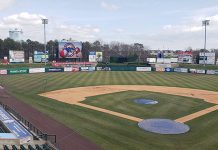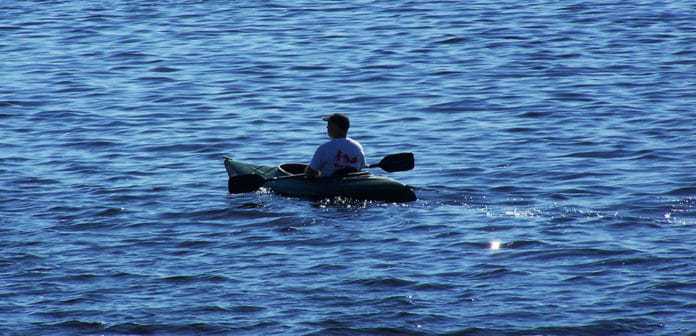
ISLAND HEIGHTS – For two decades, the natural resource of the Barnegat Bay has been celebrated. This year’s theme was “The Bounties of Our Watershed” and that theme carried through with an abundance of water-based activities held June 4 along the borough’s bay front.
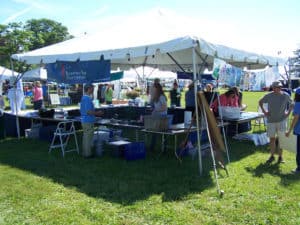
Activities for the free event, coordinated by the Barnegat Bay Partnership, included a canoe eco-tour and hands-on children’s activities such as an aquatic touch tank. Attendees also had the chance to explore natural resources of the county’s estuary.
Education was a key factor during the program that ran from 10 a.m. to 4 p.m. at the borough’s Wanamaker Complex. Adults and children learned how they could enjoy the Barnegat Bay watershed, which makes up for 660 square miles in Ocean County.
“This is an educational event but it is education made fun,” said Karen Walzer, public outreach coordinator for the Barnegat Bay Partnership. She noted that the Barnegat Bay Partnership is made up of 30 different non-profit groups, including government agencies on the federal, state and municipal level whose goal is to protect the Barnegat Bay.
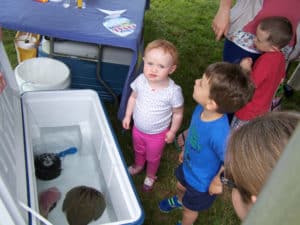
Sixty environmental organizations participated in the event. They provided information and showcased bay front activities such as hiking, birding, kayaking, swimming, fishing, crabbing, clamming, camping and kite-flying. Many organization exhibits focused on climate-ready programs and sustainability.
“This gets bigger and bigger every year. Last year we had 3,000 people come out to this location. We’ve been holding the festival in Island Heights for the last 11 years. Before that it was held in different locations,” Walzer said.
Walzer said this year’s theme also gave special focus on Ocean County farms that utilize the watershed. Attendees saw where local foods are grown, which included many U-Pick operations and local seafood providers.
“Our poster was developed by an artist and it is a rendition of each region of our local watershed. Last year we focused on the Pinelands area so that was our theme and this year we are looking to the western section such as New Egypt,” Walzer said.
With that focus in mind many 4H clubs were invited to participate. Young members of that organization introduced the public to various farm animals, including alpacas that make their home in the watershed.
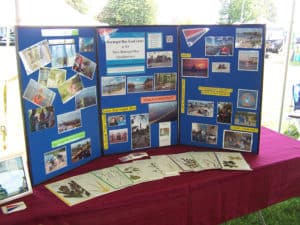
The festival gave the organization Save Barnegat Bay an opportunity to showcase a map and literature pertaining to their project of identifying 840 crossings that connect to the Barnegat Bay. “It is a large watershed and it is nice for travelers crossing these areas to know what river they are going over,” said Britta Wenzel, executive director of Save Barnegat Bay.
A native plant sale proved popular and spotlighted a variety of native plants for a Jersey-Friendly yard. “We also have members of the NJ Farm Bureau providing a history of agriculture and aquaculture in the area,” Walzer said.
New Jersey Department of Environmental Protection Environmental Specialists Katelyn Brennen and Jennifer Lesniak showed off their flood model. “The model shows how pollutants such as oils from cars, pesticides seep out to the ground and into our waterways and impact our fish and birds,” Brennen said.
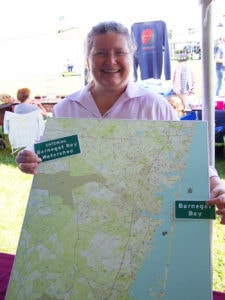
The DEP was also promoting its Watershed cleanup program that launched later in the week.
Among the many sponsors of the festival were the Jay and Linda Grunin Foundation.
“The Barnegat Bay plays such an integral role in the tourism industry of Ocean and Monmouth counties. The Festival teaches us the importance of the Barnegat Bay to the economic development of our community as well as how we can preserve and celebrate it. We are happy to support such a great cause that focuses on the continued health of the Barnegat Bay,” said Kelly Fillier, the Foundation’s director of communications.
Kevin Smith, Toms River, brought his wife and two young children to the event. “This is the first time we’ve come to this. It looked like fun and the children are getting their first look at a horseshoe crab.”
Regarding the health of the Barnegat Bay, Walzer said the feeling of area environmentalists is mixed. “We just celebrated the 20th anniversary of pump out boats which was a positive move and showed signs of bay qualities having improved.”
“Non-point pollution is a tougher nut to crack. The overall picture of the bay’s health is positive. We just completed our five year review last year called the State of the Bay that looked at 17 environmental indicators. Some of the problem levels went down including the number of beach closures during the summer season. There is room for improvement but there is a lot of hope,” Walzer said.
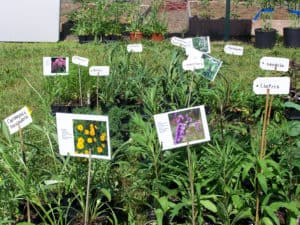
“The American Littoral Society believes that we can bring the Bay back to health which is why we have implemented non-point source reduction green infrastructure projects on the land to reduce non-point source pollution before it runs off into the bay. Our demonstration projects show we can correct the over-development mistakes of the past with creating green jobs, another positive benefit,” said Helen Henderson of the Littoral Society. “At the same time, we are bringing back historic oyster populations in the bay which will have a tremendous impact on water quality. One adult oyster can filter up to 50 gallons of water a day.”
Attendees enjoyed pontoon boat rides on the Toms River, musical entertainment by the ShoreSyde Duo, the Greater Pinelands Dulcimer Society, the Acoustic Musicians Guild, the Top Hats, and a special children’s performance by local entertainer Yosi.
Children and adults also got to touch sea life in Jenkinson’s Aquarium touch tank, while those curious about raptors, reptiles and endangered species had the chance to learn more from representatives of the Woodford Cedar Run Wildlife Refuge. There were also 40 eco-friendly arts and crafts vendors and a variety of festival food present.




